

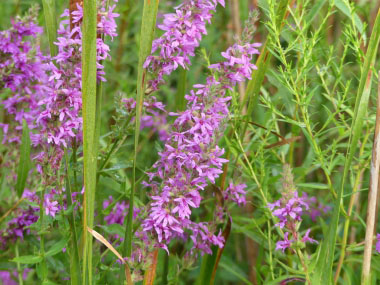
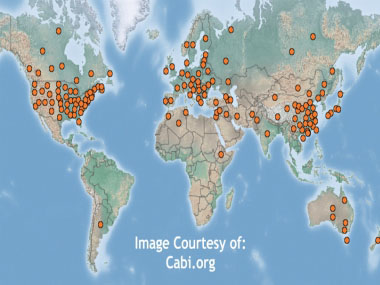
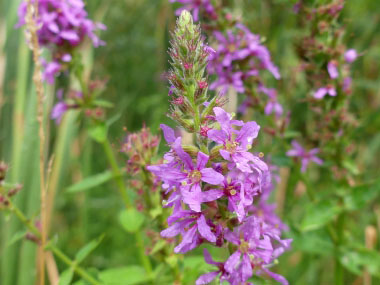
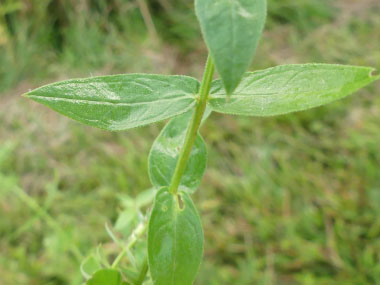
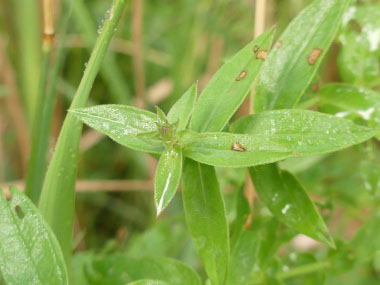
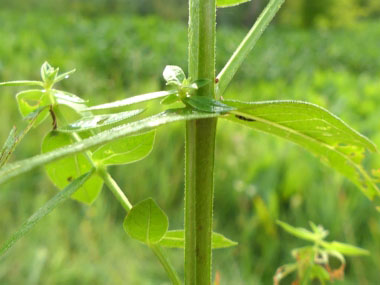
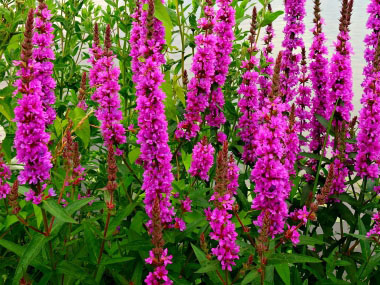
To support our efforts please browse our store (books with health benefits, etc.).
Purple loosestrife was brought to North America from Europe as a decorative plant and for medicinal purposes about 200 years ago. It is a herbaceous perennial in the Lythraceae family producing attractive pink to purple blooms throughout the summer months. The flowers are hermaphrodite and are pollinated by bees and flies. This is considered invasive in some areas yet purple loosestrife attracts wildlife including an array of butterflies. Interestingly, it is reported that if a decoction of the plant is impregnated into wood or rope, this can prevent the wood or rope from rotting in water. According to the USDA, one mature plant, under the right conditions, can produce between 1 and 2 million seeds annually.
Distinguishing Features
This perennial plant is most visually recognized due to its ability to grow up to 2 metres (6') tall and the flowers grow in tall spikes, ranging from pink to deep purple. Some reports claim the flowers can also be white. Purple loosestrife is generally seen in wet areas in mid to late summer.
Flowers
Purple loosestrife flowers can bloom from July into October (depending on geographic location). Flowering occurs 8 to 10 weeks after initial spring growth. The lowermost flowers of the inflorescence open first and flowering progresses upward.Individual flowers are 10 to 20mm in diameter and have 12 stamens surrounded by five or more petals. The length of the stamens and the style vary, helping to increase the probability of cross polination rather than self pollination.
 Fields
of Nutrition has medicinal benefits and vitamin/mineral content of Purple Loosestrife.
Fields
of Nutrition has medicinal benefits and vitamin/mineral content of Purple Loosestrife.
Leaves
The specific epithet salicaria means willow-like; it refers to the shape of the leaves of this plant. Leaves are opposite, (sometimes whorled), nearly linear, and attached to four-sided stems without stalks. Margins are smooth. Purple loosestrife leaves are simple and anywhere from 2cm to 10cm long (0.75 to 4”) and 5mm to 10mm wide (0.2 to 0.5”).
Height
Purple loosestrife can grow to between 1 and 2m in height (3' to 6') and often forming dense colonies of erect stems arising from a single rootstock. A single stem can produce as many as thirty stems growing from the main stem. It has square-sectioned stems.
Habitat
Although this plant tolerates a wide variety of soil conditions, its typical habitat includes cattail marshes, sedge meadows, and bogs. It can also be found in tidal and non-tidal marshes, stream and river banks, wetlands and on occasion, in fields. It grows throughout the U.S. and Canada as well as in several countries worldwide.
Edible Parts
Leaves and roots are edible. Roots are best gathered in the autumn and the leaves in the early summer. Several sources say to cook the edible parts of purple loosestrife before consuming. It is reported to contain flavonoids, polyphenols and tannins.
Other Name
Spiked Lythrum.
Winter Survival Food Handbook

PDF Plant Magazines
Types of Wild Food
Geographic Zones Seasons
Disclaimer
EdibleWildFood.com is informational in nature. While we strive to be 100% accurate, it is solely up to the reader to ensure proper plant identification. Some wild plants are poisonous or can have serious adverse health effects.
We are not health professionals, medical doctors, nor are we nutritionists. It is up to the reader to verify nutritional information and health benefits with qualified professionals for all edible plants listed in this web site. Please click here for more information.
Why Edible Wild Food?
- Food costs are rising
- Free, wild food is readily abundant
- Wild food adds nutrition to your diet
- Wild food can help treat various medical conditions





